Score breakdown
Things we like
- Subtle eco-credentials
- Boosted range and performance
- Exquisite interior and style
Not so much
- New $3000 premium over petrol-only model
- No fast-charging capability
- Relatively thirsty if provoked
Competition around the BMW 530e is thinning. With Lexus ending the GS sedan and Audi skipping forward to an all-electric A6, the 530e stands as one of two choices for a mid-luxury large sedan with hybrid power.
This is not BMW’s first go, either. It debuted the ActiveHybrid 5 Series in 2011, followed by the 530e iPerformance that has now dropped that name suffix after undergoing a facelift that applies a new front-end with sharper headlights and a more geometric grille.

Its other category rival is the Mercedes-Benz E300e. On paper, the E300e runs the 530e close. BMW sets the 530e at $122,900 before on-road costs and options, just swooping under the Mercedes-Benz E300e at $123,500. They’re even more closely aligned when priced online, with the BMW and Benz respectively costing $133,511 and $131,581 drive-away in Victoria.
You’ll get a three-year warranty with BMW, contrasted against Mercedes-Benz that backs cars for five years. Both warranties cover unlimited distances. BMW, however, claws back points on fixed-price servicing, where it offers a five-year plan for $2800 versus $4800 for the same period on the E-Class.
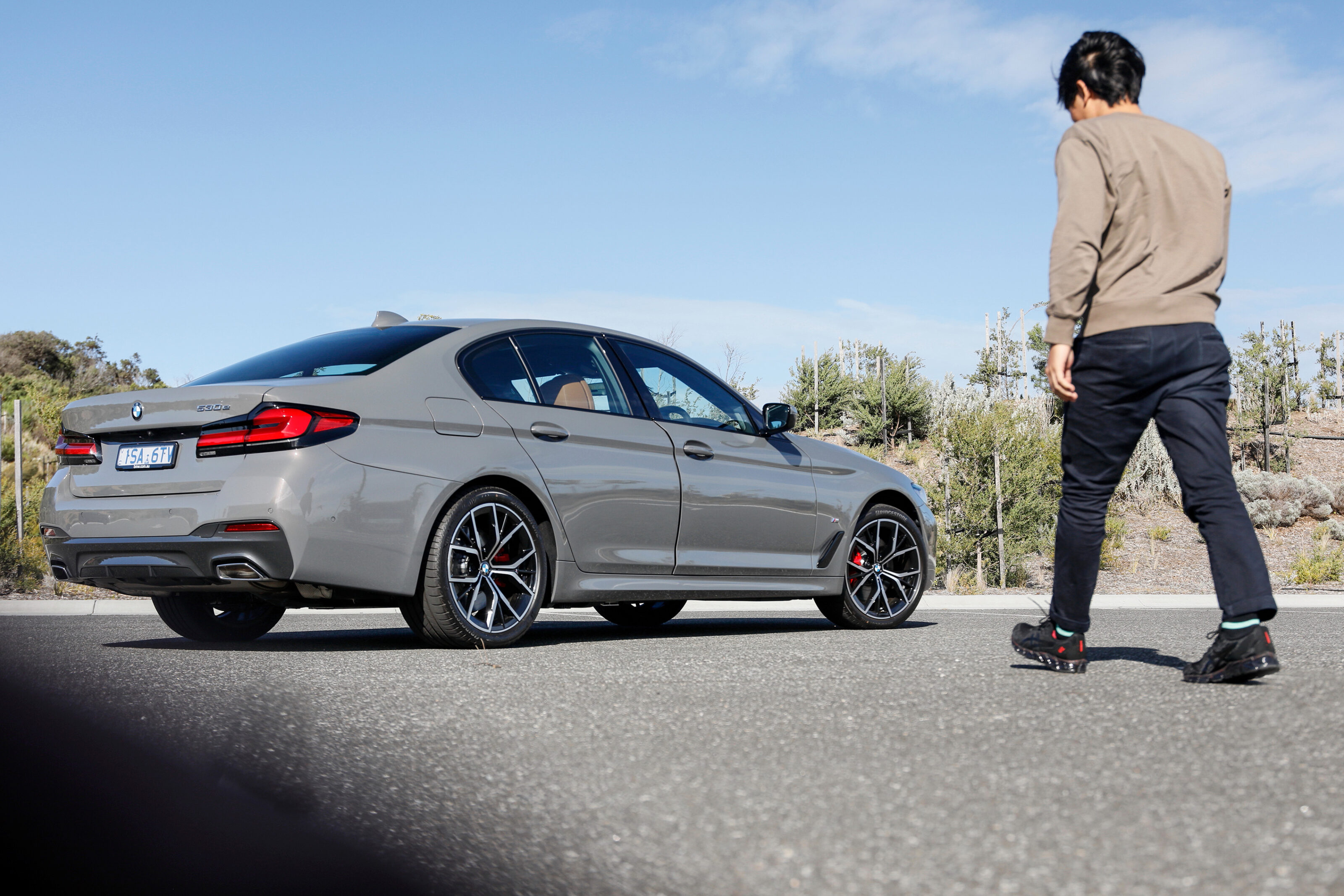
For all its glamour, the 530e gives away few clues to its greener credentials
To concentrate just on the 530e, though, inside you’ll find standard equipment like wireless charging and smartphone mirroring, electrically adjustable front sports seats, auto high-beams, auto wipers, customisable interior lighting and a head-up display. This is leftover specification from the 520i.
The 530e then takes things further with premium Harmon Kardon audio, lumbar support and heating for the front seats, an automatic boot opening/closing, adaptive suspension and M Sport brakes to build upon the 520i’s M aerodynamics package and M Sport suspension.
It’s safe as it is luxurious, as well, since the 5 Series scored a five-star ANCAP rating back in 2017. Active safety systems include adaptive cruise control, lane-keep assist and warning, blind-spot monitoring, stop and go assist, surround-view cameras and cross-traffic alert. Seven airbags are standard.
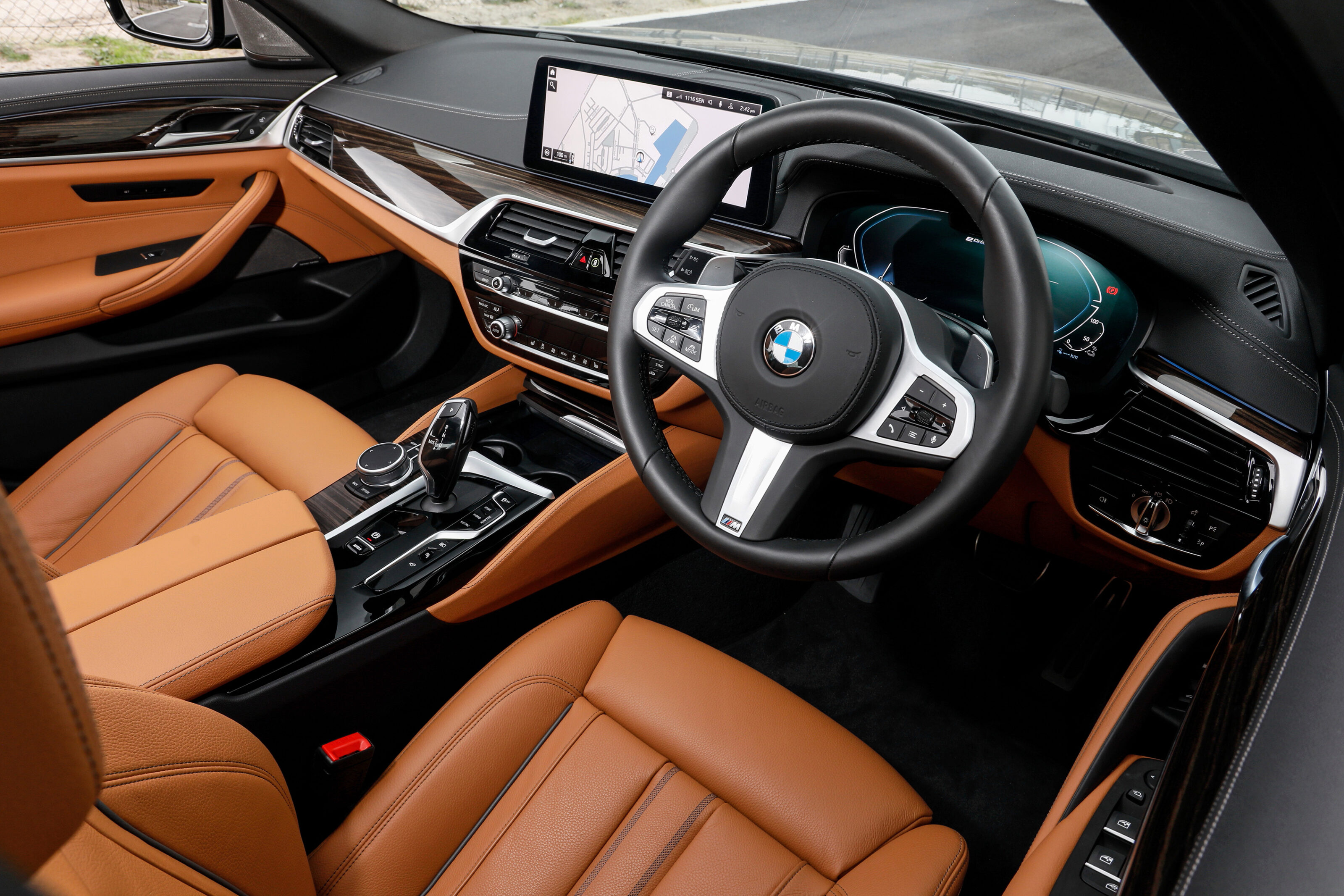
To top things off, our particular 530e features select options to further spruce its specification. An Enhance Package ($5900) throws on premium paint, which in our case is Bernina Grey Amber Effect metallic. It also upgrades from 19 to 20-inch wheels, adds a sunroof and replaces the adaptive LED headlights with laser technology headlights – claimed to illuminate 650m ahead on high beam at 60km/h.
But for all its glamour, the 530e offers only a few clues to its eco-friendlier nature. Among them are a battery charge meter to the right of the instrument cluster screen and a charge-flap on the front right guard.
Perhaps the most obvious indicator is in the boot, where batteries under the rear seat have slashed cargo capacity from 530 litres down to just 410. The boot can still swallow a pair of large suitcases, but a ramped floor means it’ll be trickier loading them into space.
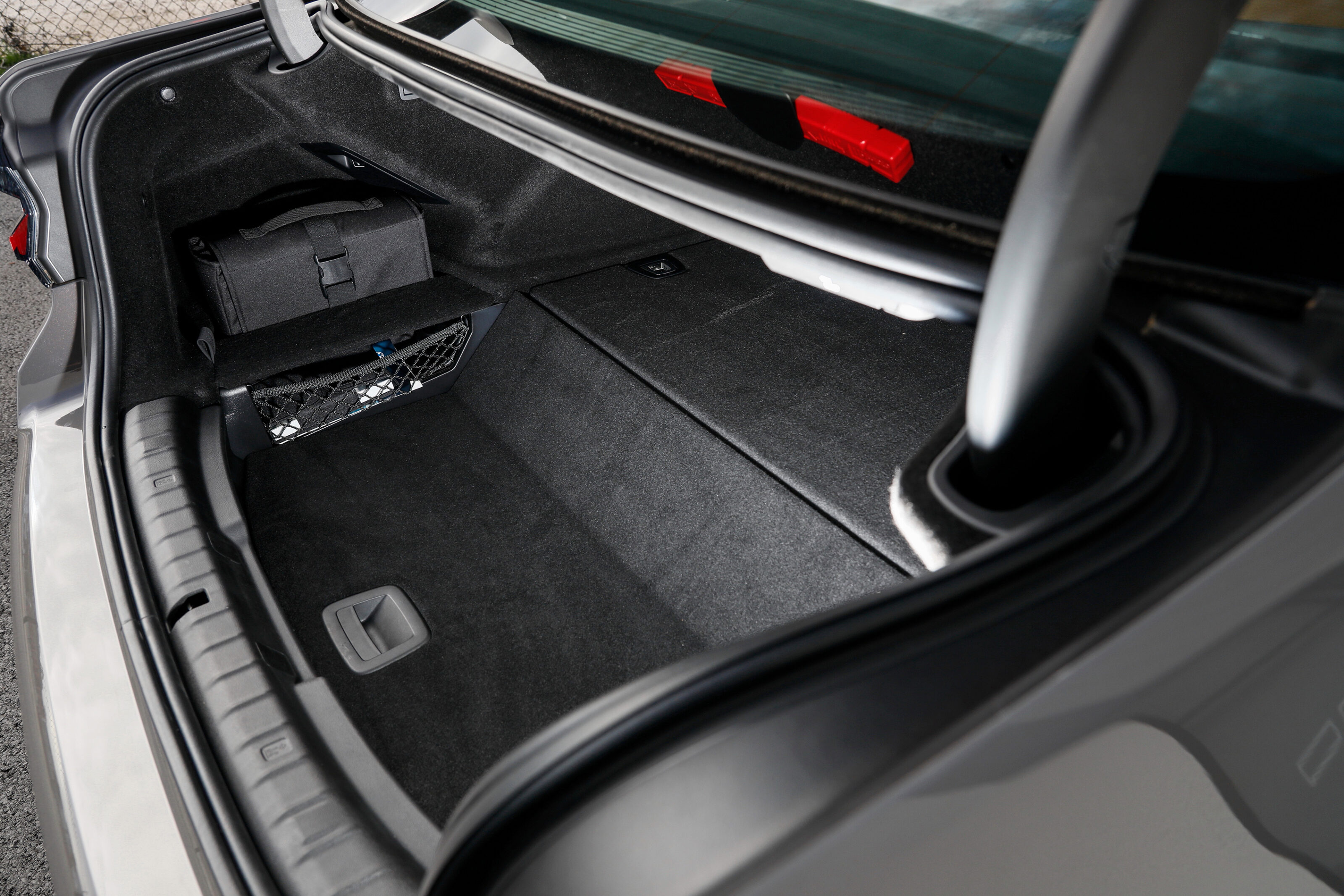
BMW has upgraded the capacity of the lithium-ion battery pack from 9.2kWh to 12kWh, boosting both range and power outputs.
While we’re on batteries, BMW has upgraded the capacity of the 530e’s lithium-ion pack from 9.2kWh to 12kWh, boosting range and outputs. Charging up takes longer, understandably, now claimed to need 3.6 hours (up from 2.9) when plugged into an AC outlet.
More battery capacity helps the electric motor sustain its maximum 80kW output during the 2.0-litre turbocharged petrol engine’s peak power spread, where it produces 135kW between 5000rpm and 6500rpm. Together, the petrol engine and electric motor can now deploy a total of 215kW during short bursts when Sport and Sport Plus driving modes are activated. That’s 30kW more than before.
The extra battery capacity also fattens the electric motor’s torque rating from 250Nm to 265Nm. However, even though the engine is rated at 300Nm, the combined torque output of the hybrid system remains 420Nm.
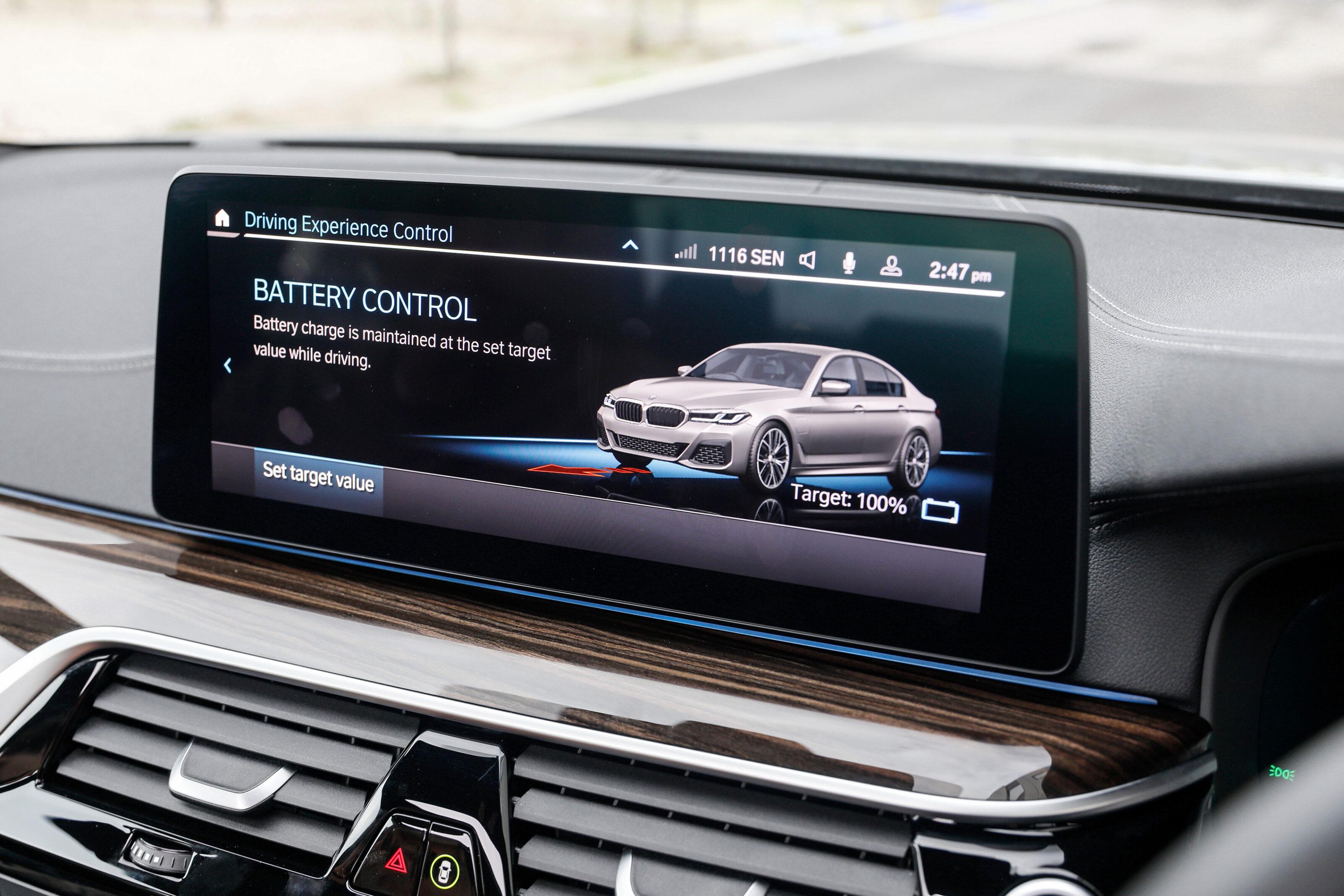
Channelling these outputs an eight-speed automatic transmission and BMW claims the rear-drive sedan can now accelerate from rest to 100km/h in 5.9sec, beating the old version by 0.3sec, even though it’s also gained weight across the range.
The 530e now tips the scales at 1835kg, up from 1770kg, the extra 65kg we assume is due to the bigger battery and new equipment like adaptive LED headlights, 19-inch wheels and larger centre screen that are standard across the range.
Astonishingly, these extra kilos have not punished fuel consumption. Its electric-only driving range has increased from 43km to 67km with the extra battery capacity, representing a 35 per cent gain. Meanwhile, the 530e’s claimed fuel consumption on an ADR-approved combined cycle, according to BMW, remains a scarcely believable 2.3L/100km.
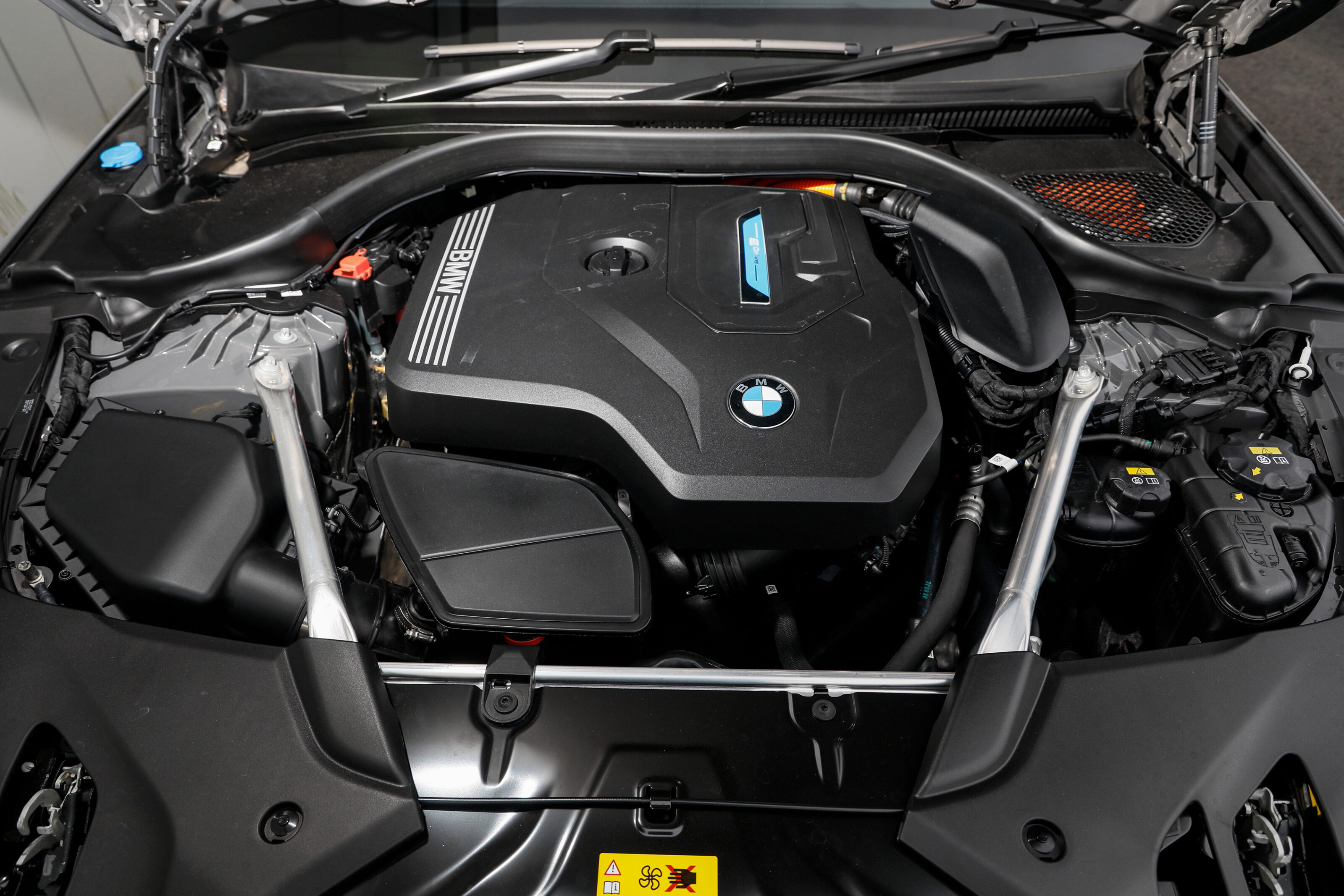
We squeezed 45km from the 530e in electric-only mode on Melbourne’s freeways, drawing down the battery’s initial 80 per cent charge to zero. We estimate the 530e could go for another 8km or so if you begin fully juiced, putting its electric-only range at around 53km. That’s short of the 67km claim, but also convincingly up on the old 43km range.
After this, we charged the 530e through a wall socket (it has no fast DC charging capability) for a couple of hours before tackling another test route over more urban roads and eventually winding our way up a mountain. We unplugged the 530e with a 50 per cent charge and took off in Hybrid mode, allowing the powertrain to balance the demands of the motor as it saw fit.
We never considered the 530e would come near its ADR-approved fuel consumption figure, mainly because the test involves running hybrid cars on a dynamometer for 20 minutes twice, to try with the battery fully charged and then without any charge at all. It’s reportedly common for hybrids to finish the first run without any assistance from the engine.

This partly explains why after our second 170km test route, the 530e returned a fuel consumption figure of 7.2L/100km, which is 4.8L/100km thirstier than the official combined consumption claim.
We didn’t hold back, however. We augmented the hybrid drive mode with every appropriate sub-mode, i.e. Sport for the corners, Eco Pro on the highways and Adaptive for around town. What do they do? Adaptive mode employs a high-regenerative braking effect. It’s strong enough to slow the car even when coasting downhill.
Eco Pro, conversely, regenerates battery only when you’re on the brake or when it detects a car in front, instead opting for long bouts of coasting with the engine off. There’s also a special Battery Control mode that optimises the powertrain for charging the battery, powering it up to a set target.

Whatever mode is engaged, the petrol engine and electric motor work seamlessly together.
Whatever mode is engaged, however, it’s worth noting the petrol engine and electric motor work seamlessly together. The engine switches on and off almost imperceptibly, with only a quiet burble to announce its return.
But our favourite mode drive mode is Xtraboost. Turned on through the centre screen in Sport mode, the engine stays on longer to charge the battery, keeping it primed for short bursts of acceleration. And we can verify the extra hit of power makes the turbocharged four-cylinder engine seem like it’s packing an extra pair of cylinders.
Torque hits from down low while acceleration lasts well into the upper rev range. And because the electric boost is activated when you push the throttle halfway, the 530e can easily kick sideways in the wet.
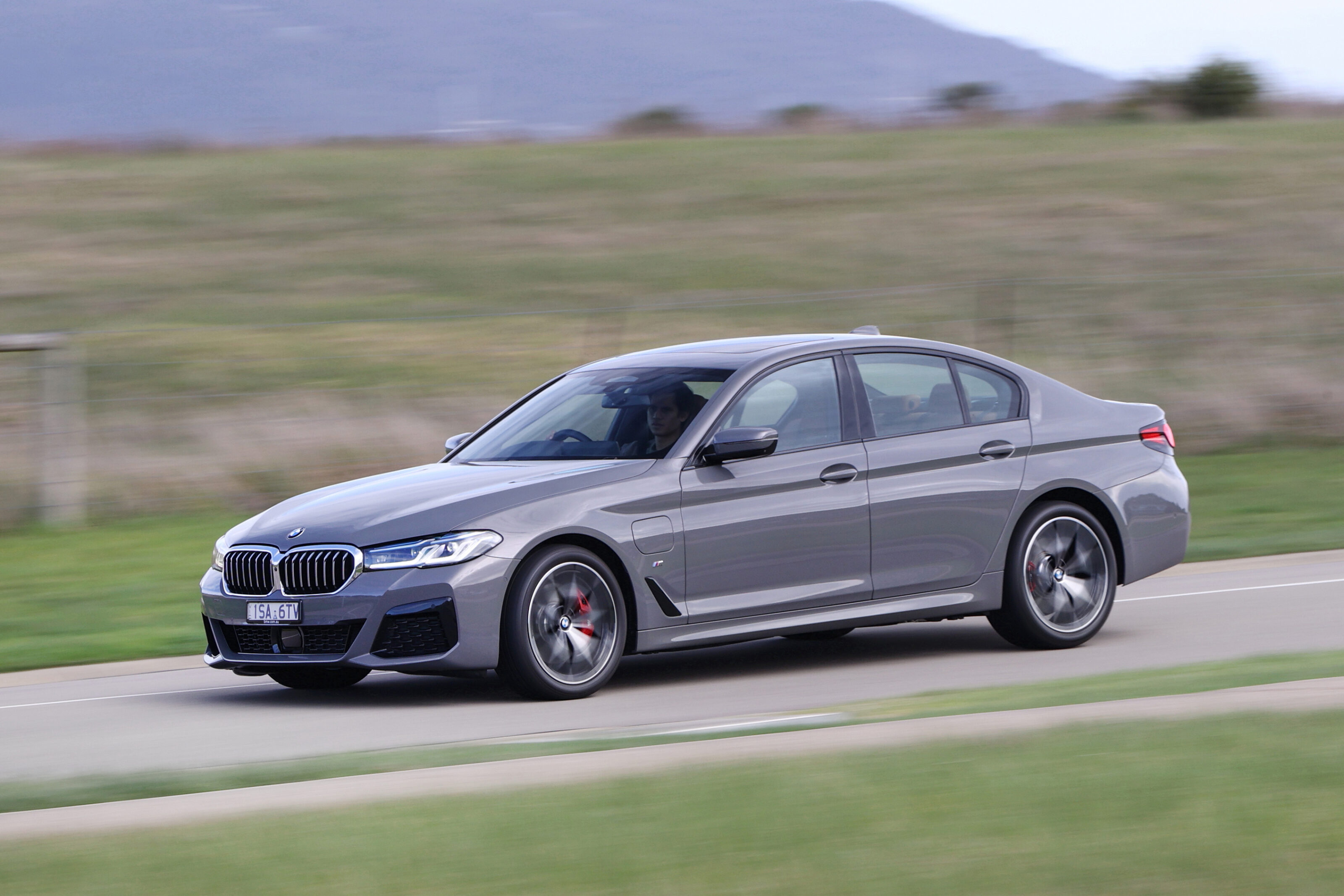
The hybrid system’s extra weight also brings more subtle changes. The batteries move the weight balance, so the 530e tends to sit more on the rear axle through corners, and the front end is a little less responsive.
This might seem academic, however, as few 530e owners would be exploring the limit – even for the short amount of time we did. But the performance is there in the rare circumstances they do.
At the heart of the 530e is a hybrid system that brings extra refinement and emissions-free driving. If you lived within 50km of work, you would rarely fill the 530e’s tank if you could plug it in to charge overnight at home.
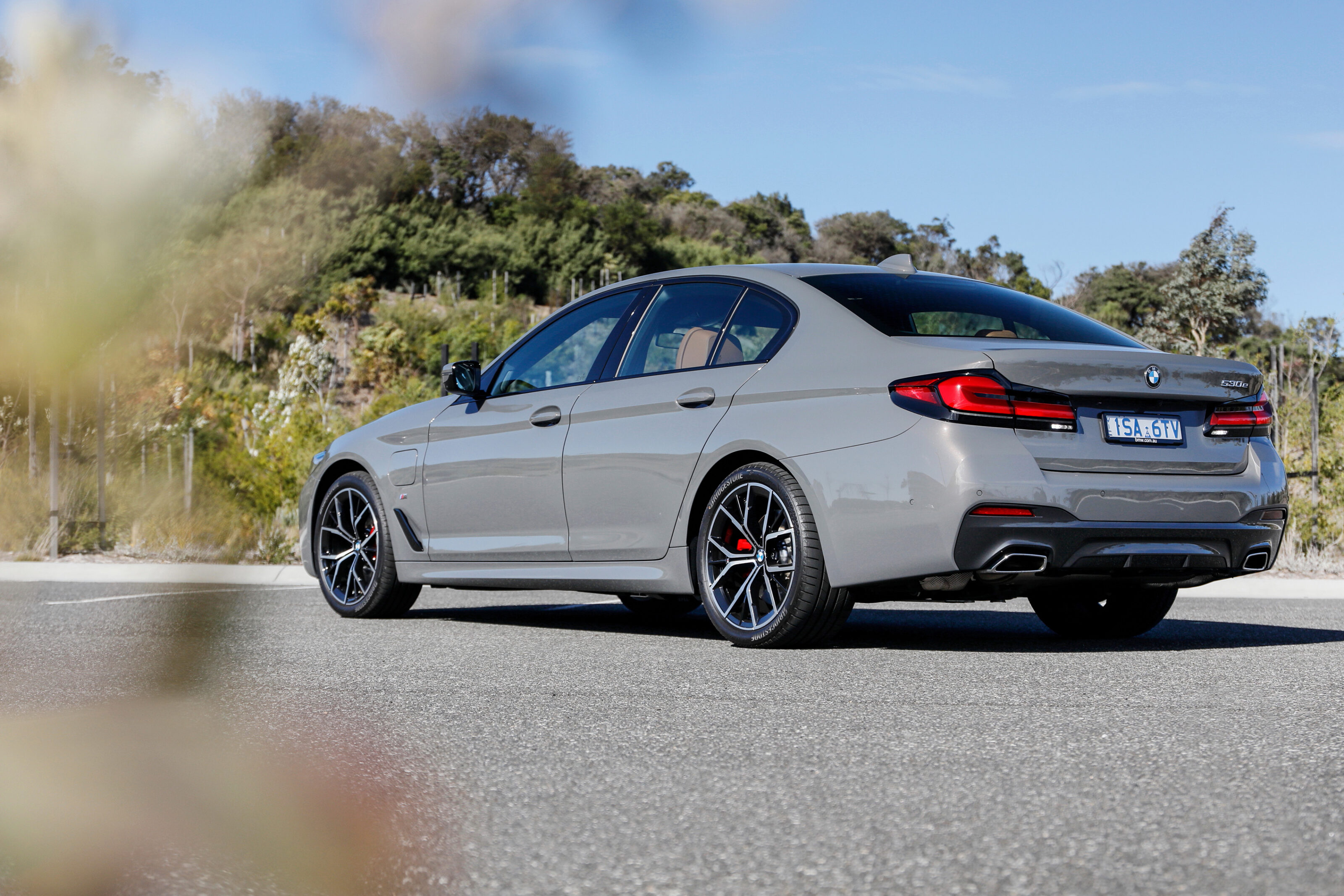
The ‘e’ badge does come at a new premium. Whereas the previous 530e was priced lineball with a 530i, this version adds another $3000. If you wanted to earn back that difference through fuel savings by using electric power alone, you would need to complete about 30,000km of electric driving. Or, 300 commutes on a 100km return trip (assuming fuel costs $1.50 per litre and you charge with a no-cost electricity source such as your own rooftop solar).
At the same time, it’s worth considering BMW covers the battery for six years and 100,000km against defects and more than a 30 per cent capacity loss.
Overall, the electric powertrain helps emphasise the luxury of the 5 Series’ quiet cabin. And between the plush optional comfort seats and adaptive suspension that delivers an absorbent ride on nibbly low-profile 20-inch tyres, the 530e is every bit as luxurious as its range siblings.
It’s also quicker, more refined and just as capable as the 530i, broadening the talents of a petrol four-cylinder 5 Series without the relatively huge price jump normally attached to the six-cylinder 540i, which is no longer available anyway.
And while cross-country travellers would struggle to see the value in the hybrid system without DC fast charging capability, the 530e makes a lot of sense for the eco-conscious city dweller – if you can resist the appeal of a Mercedes or BMW electric SUV.
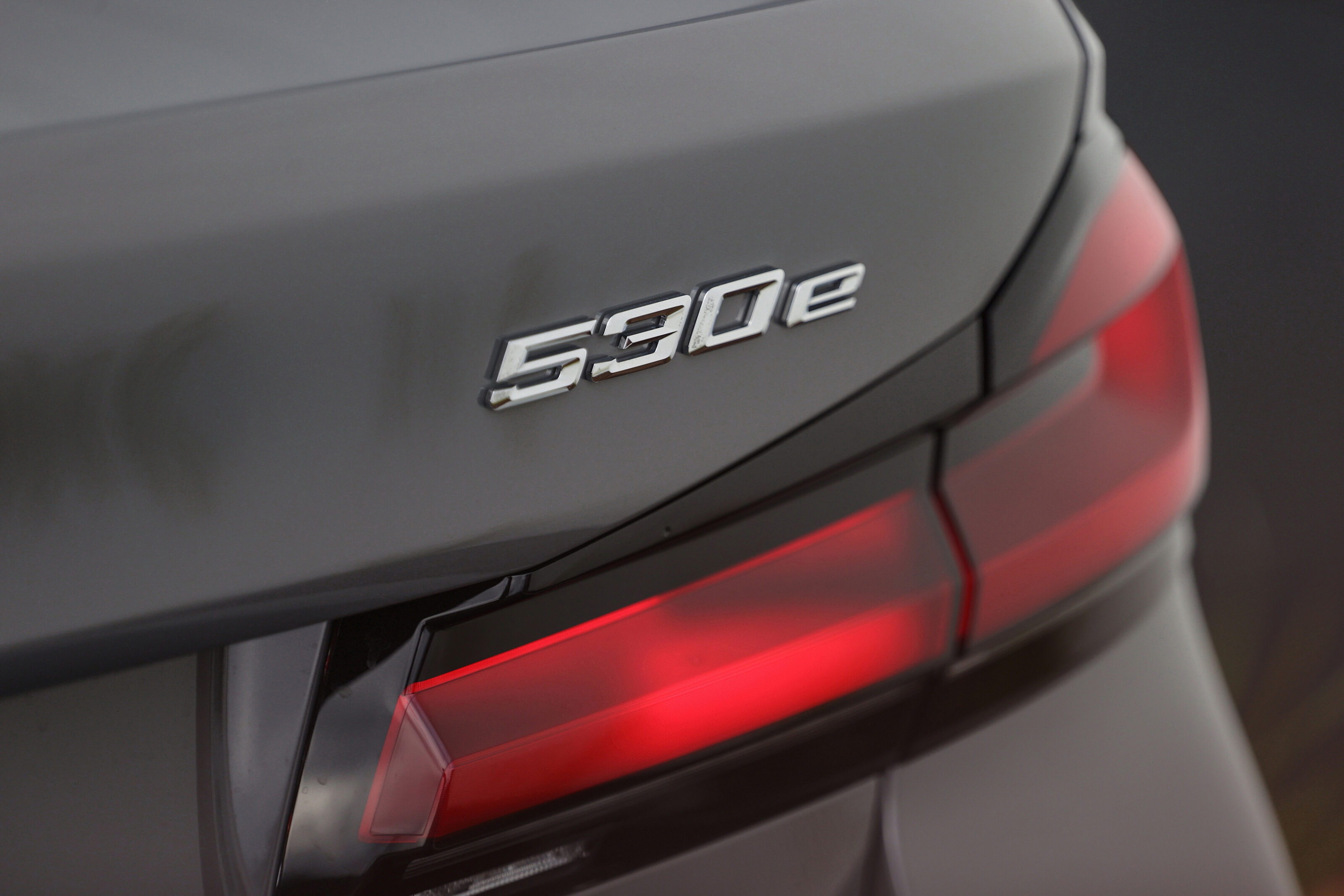
BMW 530e specifications
| Body:u00a0 | 4-door, 5-seat sedan |
|---|---|
| Drive:u00a0 | rear-wheel |
| Engine:u00a0 | 1998cc inline 4cyl, DOHC, 16v, turbou00a0u00a0 |
| Bore/stroke:u00a0 | 82.0mm x 94.6mm |
| Compression:u00a0 | 11.0:1 |
| Power:u00a0 | 135kW @ 5000-6500rpm |
| Torque:u00a0 | 300Nm @ 1350-4000rpm |
| Electric output: | 80kW/265Nm |
| Total output: | 215kW/420Nm |
| Fuel consumption:u00a0 | 2.3L/100km |
| Weight:u00a0 | 1835kgu00a0 |
| Power/weight:u00a0 | 117kW/tonne |
| Transmission:u00a0 | eight-speed automatic |
| Suspension:u00a0u00a0 | struts, adaptive dampers, springs (f); multi links, adaptive dampers, springs (r) |
| L/W/H:u00a0 | 4963mm/1868mm/1483mm |
| Wheelbase:u00a0 | 2975mm |
| Tracks:u00a0 | 1604mm/1631mm |
| Steering:u00a0 | electrically assisted rack and pinion |
| Brakes:u00a0u00a0 | ventilated discs, four piston calipers (f); ventilated discs, single piston floating calipers |
| Price (before on roads and options):u00a0 | $122,900 |
Score breakdown
Things we like
- Subtle eco-credentials
- Boosted range and performance
- Exquisite interior and style
Not so much
- New $3000 premium over petrol-only model
- No fast-charging capability
- Relatively thirsty if provoked






